
Augmented 4th Interval Songs
The Simpsons Theme Song

Maria – West Side Story
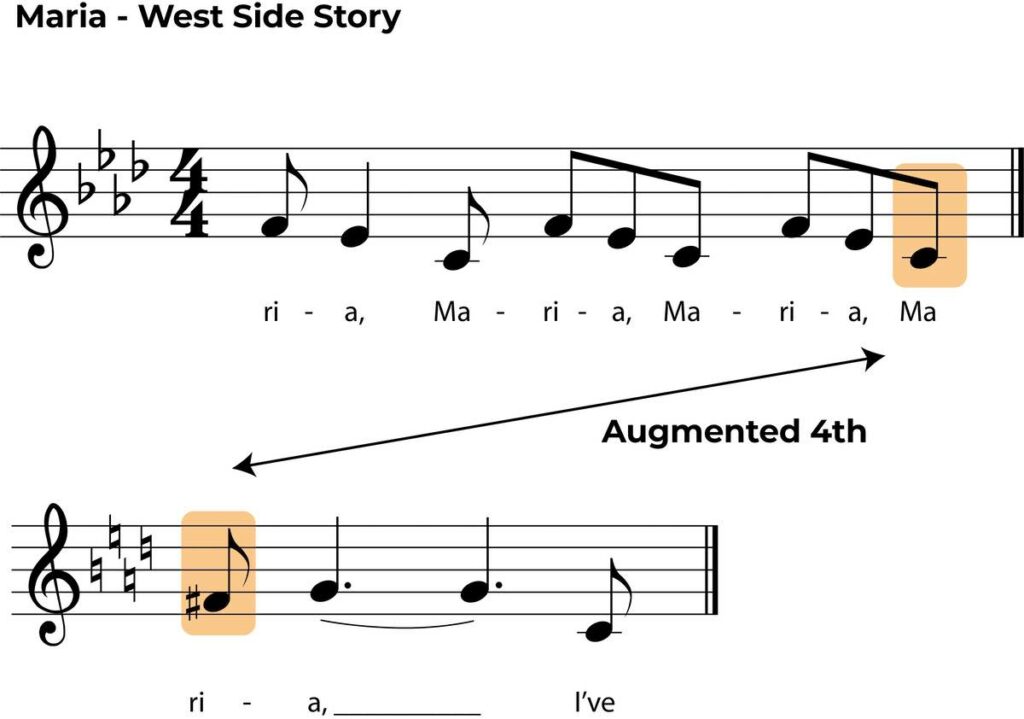
‘Purple Haze’ – Jimi Hendrix
The psychedelic rock masterpiece known as “Purple Haze” is by the legendary Jimi Hendrix. This mind-bending anthem takes you on a trippy ride with its electrifying guitar riffs and hypnotic lyrics.
The opening dissonant riff actually contains two augmented 4ths one after another. B flat – E natural and then E natural – Bb form alternating intervals, both of which are three tones apart. This gives the the song an edgy start before the famous minor pentatonic riff takes over.
In the music the first interval, B flat to E neutral is an augmented 4th as we have sharpen the Eb (the 4th degree of Bb major). The E natural to Bb is a diminished 5th as we have flatten the perfect 5th of E – B.

What is an Augmented 4th Interval?
Firstly, the definition of an interval is the distance between two notes. We could play the notes at the same time, a harmonic interval, or one of the other, a melodic interval. So how can we describe the distance between two notes.

Using whole steps and half-steps (tones and semitones)
We could describe an interval in terms of the number of half-steps for the lower note to the upper note. For an augmented 4th we have to go up 6 half-steps or 3 whole-steps to create the interval.
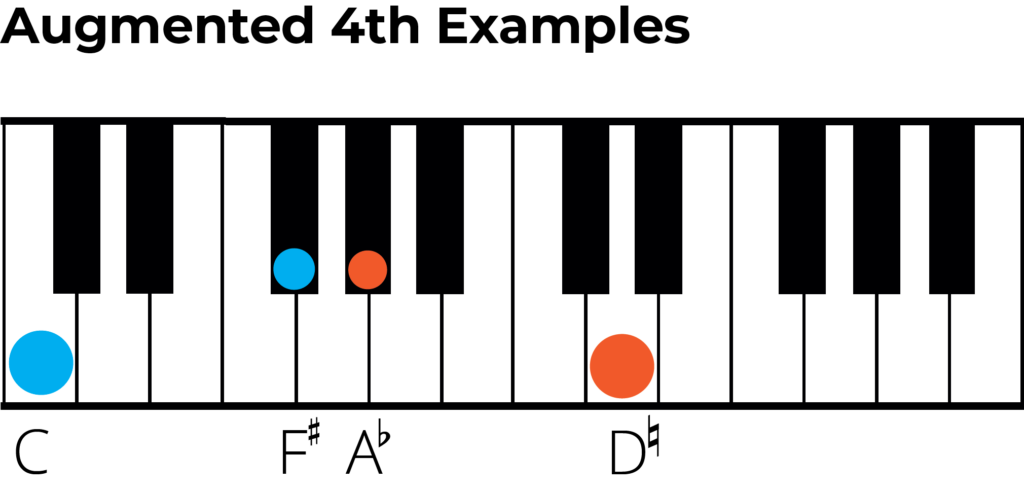
Using scales to name intervals
One difficultly I see students having with augmented intervals is how to label the top note. If we have the augmented 4th of C – F sharp, could we not write C – G flat instead? The answer is no, but it’s important to know why.
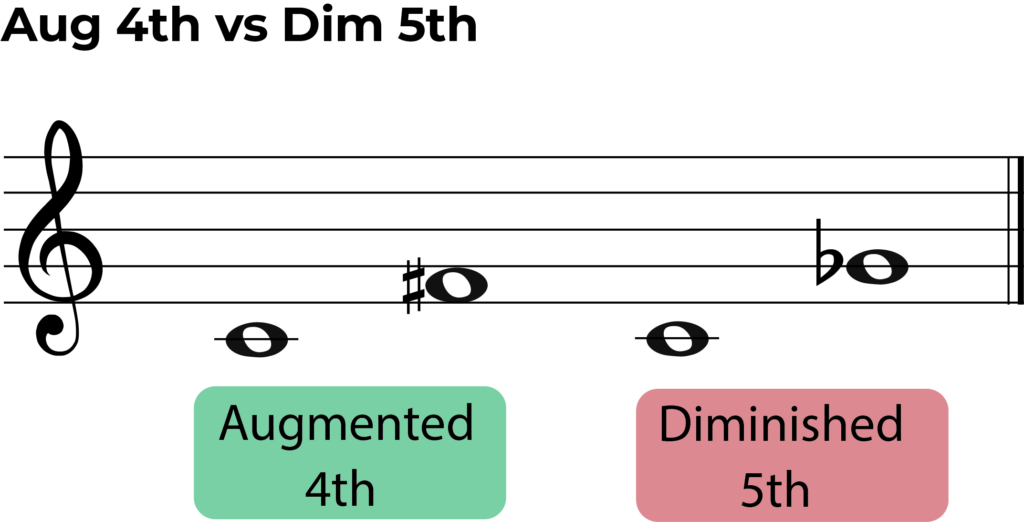
When we look at augmented 4th intervals we start with the scale of the lower note. In this case that is C major. The 4th degree of C major is F natural. Now we sharpen the F natural to F sharp to get our augmented 4th.
If we start with a G and flatten it to G flat, we have begun with a C-G interval, which is a perfect 5th. If we flatten a perfect 5th we get a diminished 5th. Now C-F# and C-Gb are harmonically the same, but the are named differently.
This also means that we might have double sharps in our interval as we could be raising a note that is already sharp. In this case we use a double sharp because changing the note letter means altering the name of the interval to a 5th. Below are some examples of augmented 4th intervals using double sharps.

Alternatively, we might see augmented 4th intervals with natural signs on the top note. Looking at the example below, the lower note is A flat. A flat major has four flats: Bb, Eb, Ab and Db. A perfect 4th would be Ab to Db and if we raise this we get Ab to D natural, our augmented 4th.
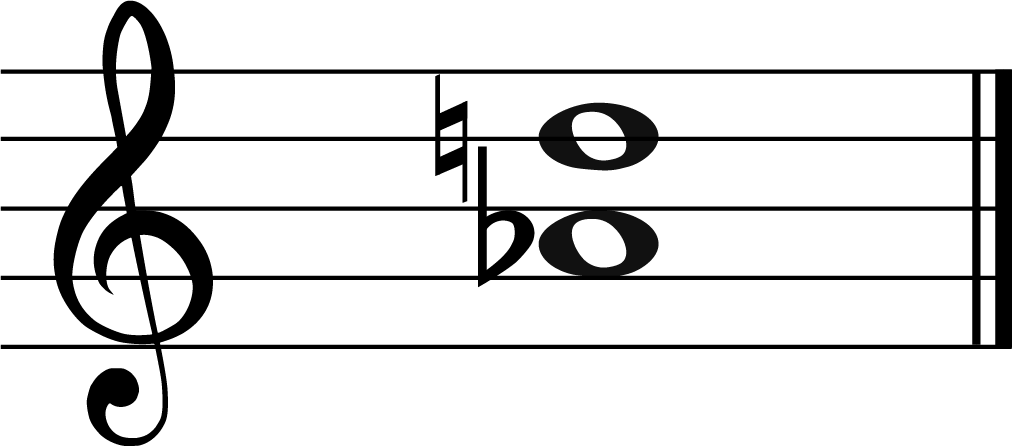
Ear Training and Intervals
To develop as a musician you’ll want to be able to recognise intervals by ear. This is where ear training comes in, as the more you practice, the better your’ll get.
My recommendation for this is Tonegym as they have a comprehensive and fun program for training your ears. It’s what has gotten the best results with for my own students.
In the ‘tools’ section of their site, Tonegym even have an interval memorizer that allows you to learn every type of interval.
For an in-depth look at ear training, here’s my full review of Tonegym.
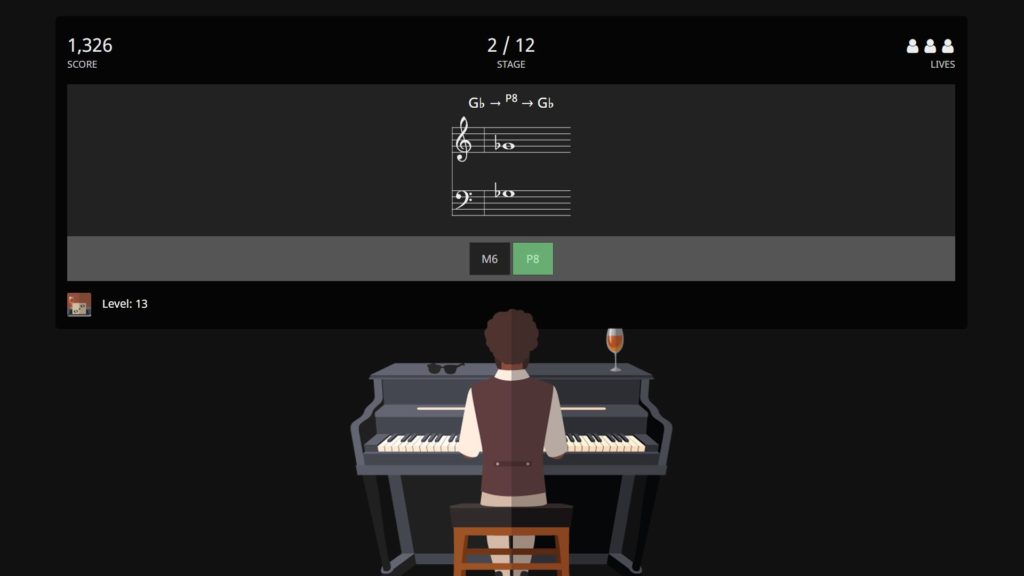
Examples of augmented 4th Intervals
Here is a table which shows augmented 4th across a whole octave. Remember that to name an interval ask yourself, ‘Which degree of the lower note’s scale is the higher note?’
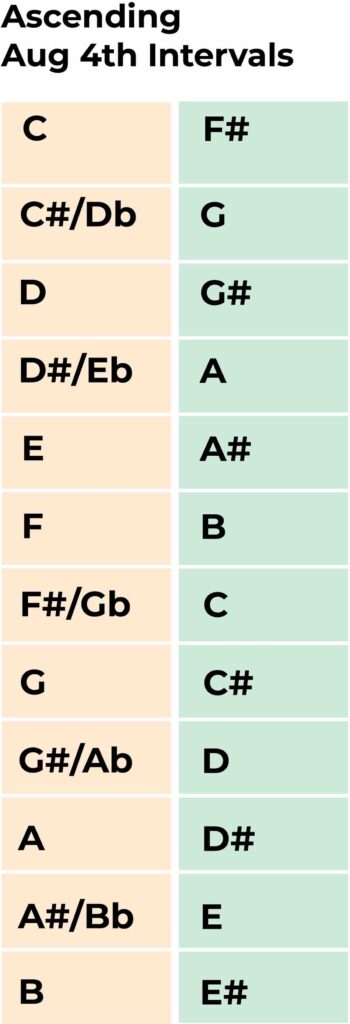
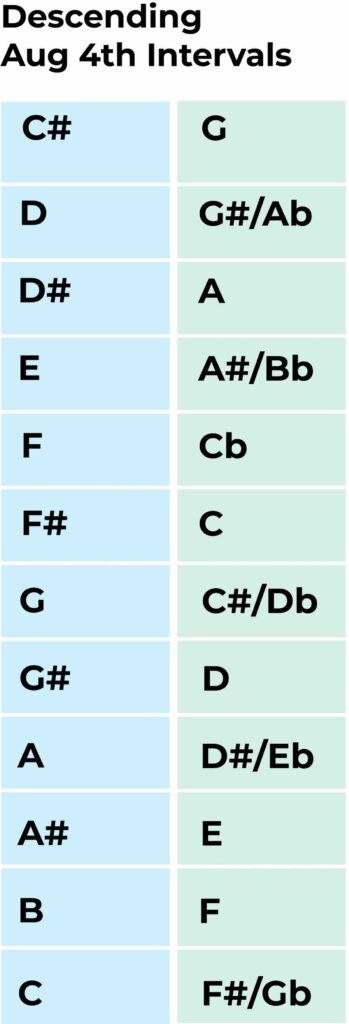
Augmented 4th Interval Qualities
We can describe the sound of intervals using a numbers of adjectives. An interval can sound ‘stable’ or ‘grounded’ like a perfect 5th, or it could sound ‘dissident’, ‘neutral’ or even ‘sinister’.
The interval of an aug 4th, also known as a tritone, carries a highly unstable and dissonant quality that can create a sense of tension and unease. It can be described as a dissonant interval due to its significant distance and clash of pitches.
When used in melodies, the aug 4th interval can be employed to create a sense of anticipation or to add a distinct and haunting quality. The augmented 4th interval is often utilized in various musical genres to convey a range of emotions, from suspense and uncertainty to moments of dissonant beauty.
It is worth noting that the Augmented 4th interval is the same as a tritone, therefore it has the same qualities. It is also equivalent to a diminished 5th.
ToneGym- The Ultimate Ear Training App
ToneGym allows you to improve your ear with a range of games, interactive and competitions.
Or check out our complete review of ToneGym.

Augmented 4th Intervals On Piano
If you are a pianist then playing a augmented 4th interval couldn’t be easier. Moving up 6 half-steps (3 whole steps) or sharpen the 4th note of any major or natural minor scale. Check out the example below.
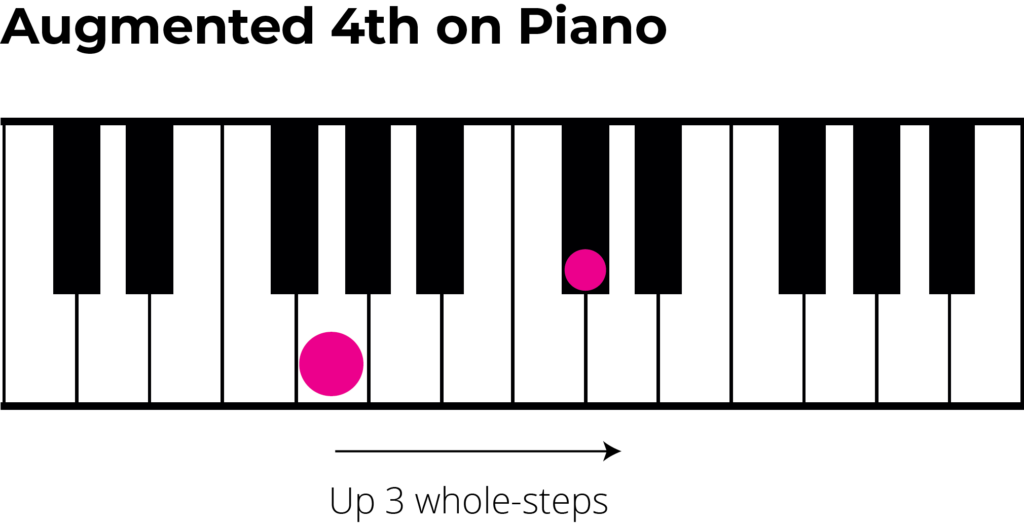
Augmented 4th Intervals on Guitar
Below are guitar shapes that with give you an augmented 4th interval. These can be moved up a down the neck to create intervals starting on different notes. In fact this is the shape used in ‘Purple Haze’ by Jimi Hendrix to play the opening tritone riff.

What’s next….?
- Learn about the Augmented and Diminished intervals.
- Expand your interval knowledge with out complete guide to intervals.
